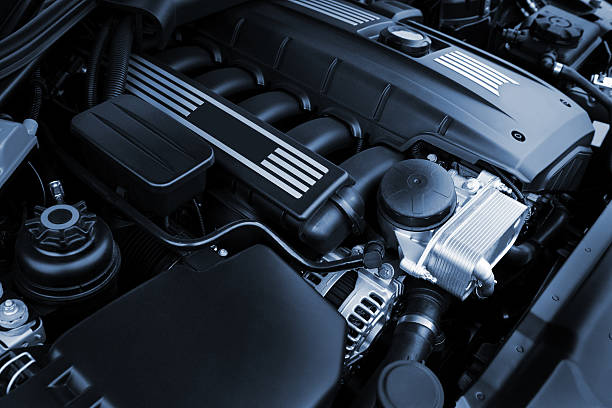Camless Engine Technology: The Next Frontier in Automotive Innovation
The automotive world stands on the brink of a revolutionary leap forward with the advent of camless engine technology. This groundbreaking innovation promises to redefine the very heart of internal combustion engines, offering unprecedented levels of efficiency, power, and flexibility. As we delve into this cutting-edge development, we'll explore how camless engines work, their potential benefits, and the challenges that lie ahead in bringing this technology to the mass market.

The Genesis of Camless Technology
The concept of camless engines isn’t entirely new. Engineers and automotive visionaries have been exploring the idea for decades, but recent advancements in materials science, electronic control systems, and manufacturing techniques have finally brought this technology within reach.
Traditionally, internal combustion engines rely on camshafts – rotating shafts with lobes that mechanically open and close valves at fixed intervals. This system, while reliable and well-understood, has inherent limitations in terms of flexibility and efficiency. Camless technology aims to overcome these limitations by replacing the mechanical camshaft with electronically controlled actuators that precisely control valve timing and lift.
How Camless Engines Work
At its core, a camless engine uses electromagnetic, hydraulic, or pneumatic actuators to control each valve independently. These actuators are governed by sophisticated computer systems that can adjust valve timing and lift on the fly, optimizing engine performance for any given situation.
This level of control allows for infinitely variable valve timing and lift, something that’s impossible with traditional camshaft-based systems. The result is an engine that can adapt in real-time to changing driving conditions, load requirements, and even fuel types.
The Potential Benefits of Camless Engines
The advantages of camless engine technology are numerous and far-reaching. Perhaps the most significant benefit is improved fuel efficiency. By precisely controlling valve events, camless engines can optimize combustion across a wide range of operating conditions, potentially reducing fuel consumption by up to 20% compared to conventional engines.
Performance enthusiasts will appreciate the increased power and torque that camless engines can deliver. The ability to infinitely vary valve timing and lift allows for optimal air-fuel mixture and combustion efficiency at all engine speeds, resulting in a flatter torque curve and more responsive acceleration.
Emissions Reduction and Environmental Impact
In an era of increasing environmental consciousness, camless engines offer a promising path to reduced emissions. The precise control over the combustion process allows for more complete fuel burning, reducing harmful exhaust emissions. Additionally, the improved efficiency means less fuel is consumed overall, further reducing the carbon footprint of vehicles equipped with this technology.
Some experts suggest that camless engines could even enable the use of alternative fuels more effectively than traditional engines, potentially opening up new avenues for sustainable transportation.
Challenges in Implementation
Despite the promising benefits, bringing camless engine technology to mass-market vehicles faces several hurdles. One of the primary challenges is cost. The sophisticated actuators and control systems required for camless engines are currently more expensive than traditional camshaft-based systems, making it difficult to implement in affordable consumer vehicles.
Reliability is another concern. While modern electronic systems are incredibly robust, the high-stress environment of an engine cylinder presents unique challenges. Engineers must ensure that the actuators can withstand millions of cycles without failure, matching or exceeding the longevity of traditional valve trains.
The Road Ahead for Camless Engines
As with any disruptive technology, the path to widespread adoption of camless engines will likely be gradual. We can expect to see this technology first appear in high-end performance vehicles and luxury cars, where the cost can be more easily absorbed and the performance benefits most appreciated.
Over time, as production scales up and costs come down, camless technology may find its way into more mainstream vehicles. The potential for significant improvements in fuel efficiency and emissions reduction could also spur government incentives or regulations that accelerate adoption.
Implications for the Automotive Industry
The advent of camless engine technology could reshape the competitive landscape of the automotive industry. Companies that successfully develop and implement this technology could gain a significant edge in both performance and efficiency metrics.
Moreover, the shift to camless engines could have ripple effects throughout the industry supply chain. Traditional camshaft manufacturers may need to pivot, while new opportunities arise for companies specializing in electronic control systems and advanced actuators.
The Future of Internal Combustion
As the automotive world increasingly turns towards electrification, some might question the relevance of advances in internal combustion engine technology. However, the reality is that internal combustion engines will continue to play a significant role in transportation for decades to come, particularly in markets where electric vehicle infrastructure is still developing.
Camless engine technology represents a bridge between traditional internal combustion engines and the electrified future. By dramatically improving the efficiency and performance of gasoline and diesel engines, this innovation could extend the viability of internal combustion technology well into the future, even as electric vehicles gain market share.
In conclusion, camless engine technology stands as a testament to the continuing innovation in automotive engineering. It promises a future where engines are not just more powerful and efficient, but also smarter and more adaptive. As this technology matures and overcomes its current challenges, we may be witnessing the dawn of a new era in automotive propulsion – one that combines the best of traditional engineering with cutting-edge electronic control.





